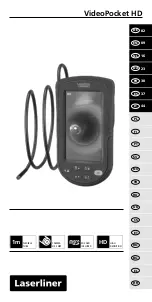
allows these instruments to be used as true remote AFR or lambda meters. Connecting these
meters to the second analog output of the LM-1 allows to use them as true remote AFR meters,
provided the LM-1 analog output is programmed to the characteristics of the used meter.
The LM-1's second analog output is factory programmed to provide a linear output between 1V
and 2V for an AFR of 10 to 20, allowing using a digital voltmeter as AFR display. Any other linear
output range between 0 and 5V can be programmed. See chapter 9.6, 'Programming analog
outputs' for details.
8.2 Special considerations when installing LM-1 permanently in the vehicle
Do NOT install the 9V battery in the LM-1 when installing it permanently in
the vehicle.
In a typical permanent installation the LM-1 will be powered by switched 12V from the vehicle
(12V switched on when the ignition key is turned on) while its power switch is permanently on.
Because LM-1 automatically switches to internal battery power when it does not detect 12V, the
internal battery would drain quickly while the vehicle is parked. To avoid this, do not install the 9V
battery. The LM-1 will function correctly without it and will be able to record as usual. To
download recorded data, follow the alternate steps described in chapter 9.
It is NOT a good idea to connect the LM-1 permanently to 12V and switch it on before the vehicle
is started. The sensor would heat up to its operating temperature. Depending on the climate and
the senor position in the exhaust, condensation water can form in the exhaust pipes. This
condensation water could then be blown by the exhaust stream against the hot sensor when the
car is started. The resulting heat shock can permanently damage the sensor.
To further protect the LM-1 when installed permanently it is a good idea to power it up only after
the car is started. The starter motor in some vehicles can create voltage spikes of over 100V that
have the potential to do damage. Although rare, this is a real possibility and the LM-1 contains
protection circuitry to guard against it. A relay connected as shown below insures that the LM-1 is
disconnected while cranking. This reduces further drain on the car battery by the sensor heater
and protects the LM-1 against abnormally large voltage spikes.
Connect one terminal of the relay switch and relay coil to switched 12V (number 15 on European
cars). Connect the other switch terminal to the 12V input of the LM-1. Connect the other end of
the relay coil to the starter solenoid wire (number 50 on European cars). When the starter
solenoid is operated, the relay will switch off. In running condition the relay coil current will flow
from 12V through the starter solenoid to ground. The relay coil current is normally far too small to
operate the starter solenoid.
- 9 -










































